The Demoiselle Crane Man of India
A grey cloud forms over the Himalayas. Not necessarily such an unusual event, as the area is well known for its precarious and unpredictable weather patterns. This shape is significant for other reasons however, as the form is actually an assemblage of demoiselles cranes. They fight the harsh winds and avoid predatory eagles, making use of the updrafts and currents of the wind patterns on their flight from Mongolia and Eurasia to a small hamlet in Rajasthan for the winter months. This is the story of one man who made a difference, the demoiselle crane man of India.

When it comes to travel, animal and bird migration has our frequent flyer miles beaten hands down. A magnificent spectacle, it’s often hard to believe how far animals travel. Some, like the salmon have an incredible DNA power to arrive and breed in exactly the same river generation after generation. The monarch butterfly travels over 2,000 miles and use the earths’s magnetic field for guidance. The infamous red crabs of Christmas Island move like something out of a science fiction movie to lay their eggs. Who hasn’t marveled at the annual migrations that take place in Africa?
On the road from Jodphur, hugging the edge of the Thar desert I was able to witness the migration stop of thousands of demoiselle cranes who travel from their breeding grounds in Mongolia and the Caucasus region to Rajasthan and India’s mild winter. It takes two weeks for them to make the journey of approximately 5,000 miles. They arrive in November, and for nearly five months, find sanctuary in the small Rajasthan village of Keechan.
The story of the demoiselle crane man of India is one of serendipity. Called by an uncle to return to his small village homeland, Rantanlal Maloo and his bride found the sleepy town quite a change from their previous life. As devout Jains, they were pleased when handed the task of feeding the local birds. For a time, squirrels, sparrows and peacocks were the main takers. When a group of huge black and white birds arrived, they discovered the migratory demoiselle cranes who frequented the surrounding farmlands in the winter.
Much to the couples delight, the following year, their numbers doubled. Here in this dusty village, a World Heritage Site has been established and the numbers continued to grow upwards to over 15,000 birds. The villagers revere their feathered friends, providing tons of feed every year, funded through donations and the Jain community. Hundreds of visitors flock to the sanctuary every year to see the symbiotic relationship that has been developed for more then 40 years.
Demoiselle cranes are the smallest of the crane species, and are famous for their complex communication methods. Obviously they successfully made it known that Khichan was a safe haven complete with a full menu. As I approached the site, the cranes could be heard for miles. Their singing was constant with a deep rasping voice calling in a symphony of sounds. Strains can be isolated by moving around the land to listen to different groups. They pair for life and the bond between the couple is strengthened by duets, and elaborate ballet-like dancing.
After their meal, the cranes move on towards two lakes on the edge of the village. There, on Vijaysager Lake and Raatdi Naadi, they drink, perform mating rituals and ingest copious amounts of pebbles from the lakeshore. The stones act as grinding mechanisms to help break down the whole grains they have recently eaten. Just before dusk , they return to the Malhar Rinn, a salty landscape about 12 miles from Keechan. In the morning, the entire flock moves into the repetitive feeding pattern.
The environmental value of this settlement was not lost on me. Because of the generous act of one man, the birds are able to co-exist in harmony with humans. The ecology of the region is preserved, as the grain keeps the cranes from ravaging the surrounding farmlands and destroying the crops. The migration is sustainable and the people of the small village can continue to successfully farm the land.
In 2011, the demoiselle crane man of India left the earth on his own journey. The cranes continue to return to the spot where Ratanlal fed them for over 40 years. Come March, like clockwork, they return to the land of their birth to begin their yearly cycle all over again.



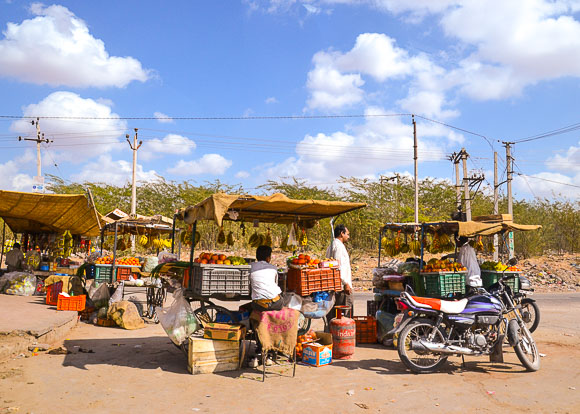
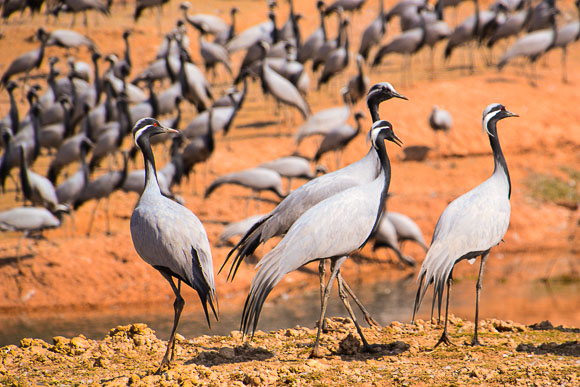
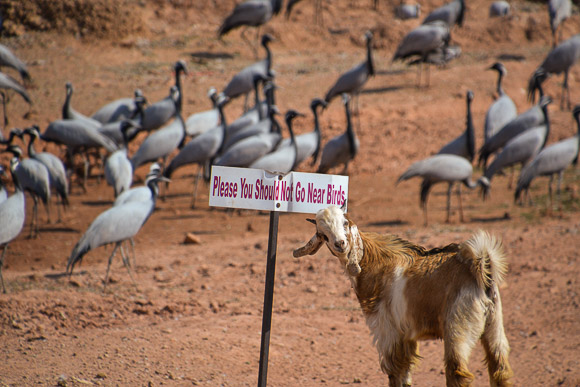
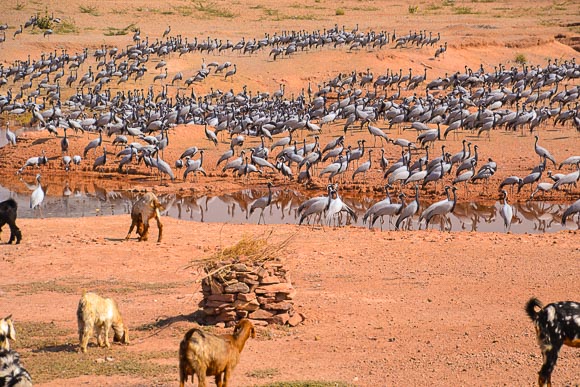
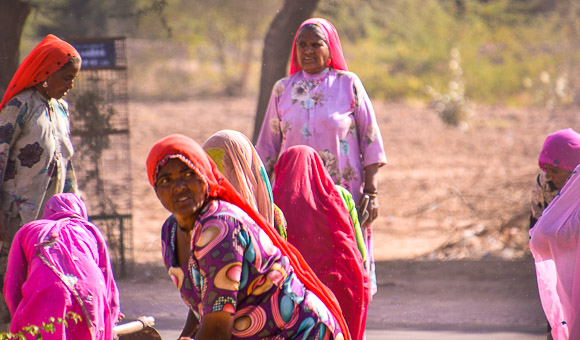
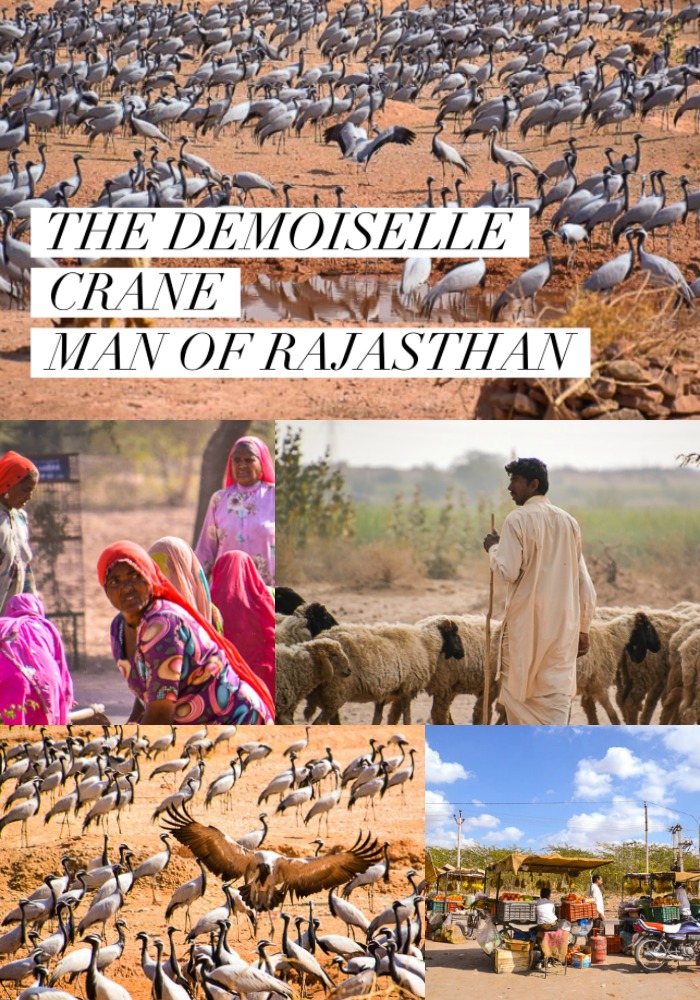


































That is quite incredible – there’s so many more migrations than just those in Africa and to see all those cranes is beautiful. Another reason why India is amazing!
What a fascinating story – and the birds look beautiful, having so many in one place is just an amazing sight.
The demoiselle crane looks like a beautiful bird. What a great story about ensuring their survival!
I loved the story too Karen. I saw them flying over the Himalayas in a documentary and feel so lucky I got to visit this place in the middle of nowhere in India.
Love that photo of the goat looking at the camera! I’ve never heard of Demoiselle cranes. Interesting story. Thx for sharing.
He was making use of the sign to have a little scratch! It was interesting to see how the goats and cranes interacted-they all kept their distance.
Wow! What an incredible time to visit. And what a powerful read on Earth Day. Loved the photos, too.
Fascinating story. And a reminder that one person can make a difference. It must have felt very special to see and hear the Demoiselle cranes in Keechan.